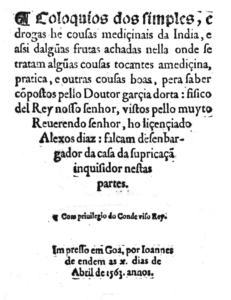Written by Rebecca Pereira
It is argued that Goa in the 1500’s was far more developed than the rest of Asia. The first printing press to arrive in Asia entered India through St. Paul’s College in Goa, but what happend to the machine post 1660, is a real mystery.
In 1500’s many factors such as evangelization contributed to the necessity of the initiation of printing in the subcontinent, the Jesuits were solely responsible for this. In a letter to St. Ignatius of Loyola, dated 30 April 1556, Father Gasper Caleza speaks of a ship carrying a printing press, setting sail from Portugal to Abyssinia (current-day Ethiopia) via Goa, with the purpose of helping missionary work. Circumstances such as the Abyssinia government was not keen in receiving the missionaries, prevented this printing press from leaving India, and consequently, printing operations began in Goa in 1556, through Joao De Bustamante.
Bustamante unveiled printer
Bustamante, an expert printer was sent accompanying the printing press and along with his Indian assistant set up and began to operate it.
Among others, four books are known to have been printed by Bustamante:
- The first book published that year was called Conclusiones Philosophicas.
- A year later, the printing press published its second book, Catecismo da Doutrina Christã, five years after the death of its author, St. Francis Xavier. (no copies of these works are available).
- This was followed by the printing of Garcia da Orta’s Colóquios dos simples e drogas he cousas medicinais da Índia, in 1563 by Joao de Endem.
- The earliest, surviving printed book in India is the Compendio Spiritual Da Vide Christaa (Spiritual Compendium of the Christian life) of Gaspar Jorge de Leão Pereira, the Portuguese Archbishop of Goa.
“Thereafter, due to its inactivity, the same was shifted to the Major Seminary at Rachol, Salcete, in 1616 and it functioned there upto 1660,”according to Government Printing Press, Government of Goa.
The Goa museum has a gallery of different manually operated printing machines, but not a case or a rubber stamp of the first press is displayed here for the reason that post 1660 the printing press seemed to have disappeared. Despite no traces of the Printing Press ever leaving Goa, the machine cannot be located.
Image credits – Wikimedia.org



